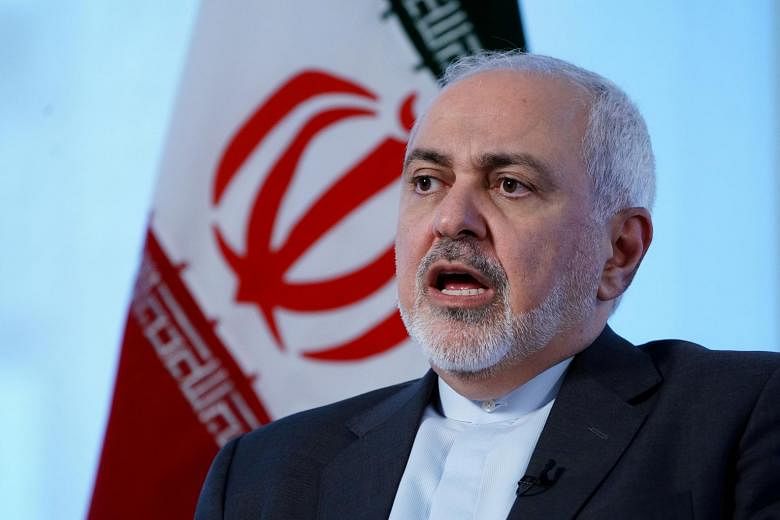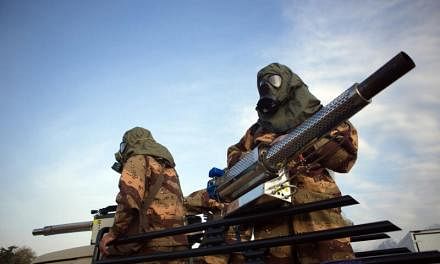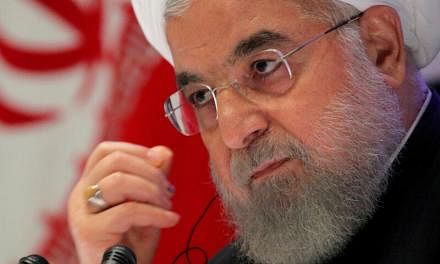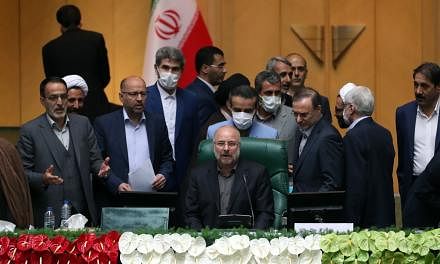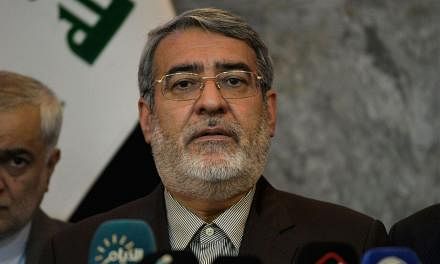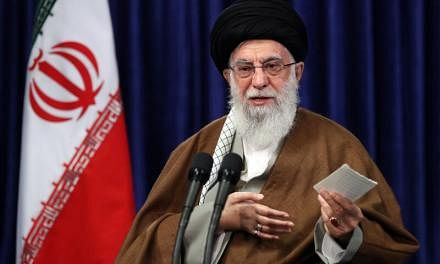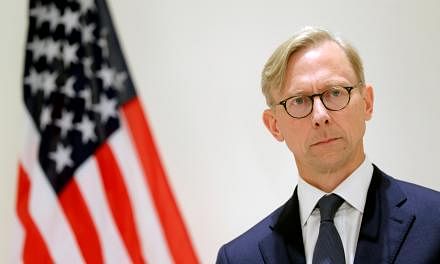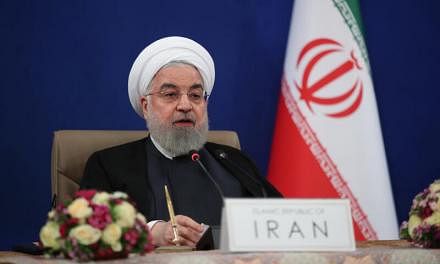WASHINGTON - US President Donald Trump has imposed new sanctions against Iran, targeting its Supreme Leader, military officials and top diplomat Javad Zarif.
The move came as tensions between the US and Iran mounted after an American drone was shot down last Thursday, prompting Mr Trump to order air strikes before backing down.
The confrontation has raised fears of an armed conflict between the two countries that may quickly spiral into a wider war in the region.
Here's what you need to know about the crisis.
WHAT IS THE ROOT CAUSE OF THE CRISIS?
The current crisis began in 2018, when Mr Trump pulled the US out of the Iranian nuclear deal and reimposed harsh sanctions on the country. The sanctions have all but halted Iranian oil exports, a lifeline for its economy.
Mr Trump has also accused Iran of taking actions that destabilise the Middle East and sponsoring terrorism.
In response, Iran has threatened to exceed uranium enrichment levels allowed under the nuclear deal, a step towards acquiring nuclear weapons and putting pressure on the Trump administration.
WHY ARE TENSIONS RISING?
The US has blamed Iran for explosions that struck two oil tankers last week in the Strait of Hormuz, a vital shipping route, as well as mysterious attacks on four commercial ships off the coast of the UAE last month. Iran has denied responsibility.
The attacks in the Strait of Hormuz, which is the only route to ship oil from the Persian Gulf, have raised concerns over the impact on the world economy, especially if the strait - which is only 33km-wide at its narrowest point - has to be closed.
Relations further deteriorated when the US announced the deployment of 1,000 troops and extra military resources to the Middle East.
The shooting down of the drone was a dangerous escalation, which prompted Mr Trump to announce air strikes on Iran before backing down. Instead, Mr Trump on Monday imposed "hard hitting" sanctions on Iran that are intended to deny Supreme Leader Ayatollah Ali Khamenei, his office and "many others" access to financial instruments.
In response, Mr Zarif has noted that the path for diplomacy is now closed.
WHAT HAPPENED WITH THE DRONE?
Iran's Revolutionary Guard said last Thursday that it had shot down an "intruding American spy drone" after it entered the country's territory.
The US insists the incident occurred in international air space over the Strait of Hormuz.
Both Washington and Teheran continue to argue over the location of the downing, with Foreign Minister Zarif tweeting a timeline of the incident on Thursday, which included the coordinates where the drone was targeted. Washington, in response, released its own coordinates.
Mr Trump had tweeted after the incident that "Iran made a very big mistake".
HOW CLOSE IS THE US TO WAR?
Mr Trump is now caught between Republicans demanding a response to the downing of the drone and Democrats who have warned that the US could be dragged into a war.
Overnight on Thursday, Mr Trump abruptly called off military strikes against Iran after previously approving them in retaliation for the drone shooting.
"We were cocked & loaded to retaliate last night on 3 different sights," Mr Trump tweeted on Friday.
"10 minutes before the strike I stopped it."
Causing so many casualties, he added, would not have been "proportionate to shooting down an unmanned drone."
A US official with direct knowledge of the matter told CNN that the US military would have targeted Iranian radars and missile batteries.
WHAT WOULD A CONFLICT LOOK LIKE?
The US went to war with Iraq in 2003, but a war with Iran would likely be different, with Iran using its networks of regional proxies to target the US and its allies far from Teheran.
While the US is likely to outgun Iran, the consequences could be regional instability and a high cost to the global economy.
And while the US may be able to count on Israel, Saudi Arabia and the UAE in case of a conflict, there is unlikely to be support from European allies angered by America's decision to walk away from the nuclear deal.
Meanwhile, Iran's resources in the region would include Hizbollah in Lebanon, the Houthis in Yemen and an array of militias in Iraq. It may also be able to count on its ties with Syria after helping keep President Bashar al-Assad in power.
